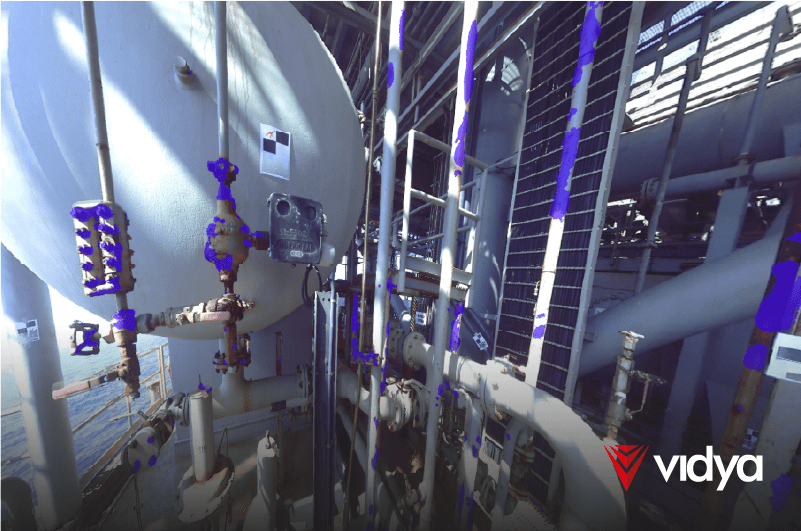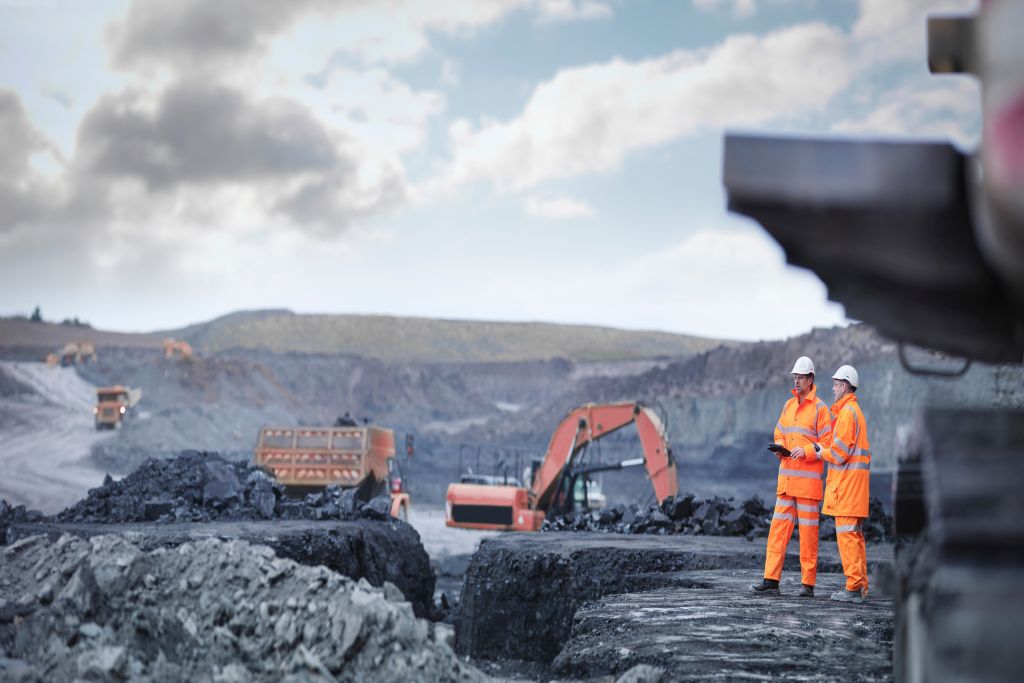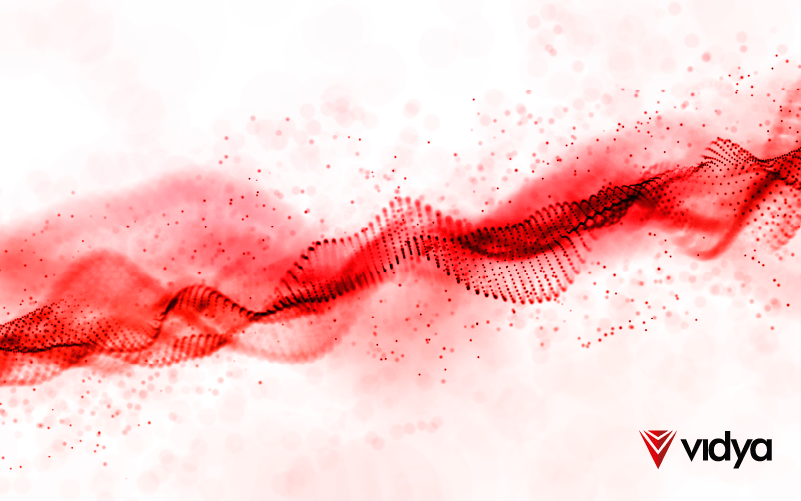Corrosion detection is a challenging, risky, time-consuming, and expensive process. According to NACE, the global corrosion cost is estimated to be US$2.5 trillion, equivalent to 3.4% of the global GDP (2013). On top of that, it requires workers to inspect every edge of an enormous environment full of flammable hydrocarbons. However, the use of AI is reshaping this practice.
AI-powered corrosion detection uses drones and sensors to map the asset digitally. And by adopting cutting-edge technology, this new method is proving to be more efficient and reliable than the traditional one. This article will analyze how AI applied to corrosion treatment works and its urgency to the Mining and Oil and Gas industries.
How corrosion is traditionally managed
To understand how AI applies to this context, it is necessary to look at how its demand arose. Before AI, corrosion detection alone took months, allocating dozens of professionals in +200.000m² assets to look around for anomalies. Not considering the other stages of corrosion treatment, such as painting, maintenance, and decision-making, which would still take several months to complete.
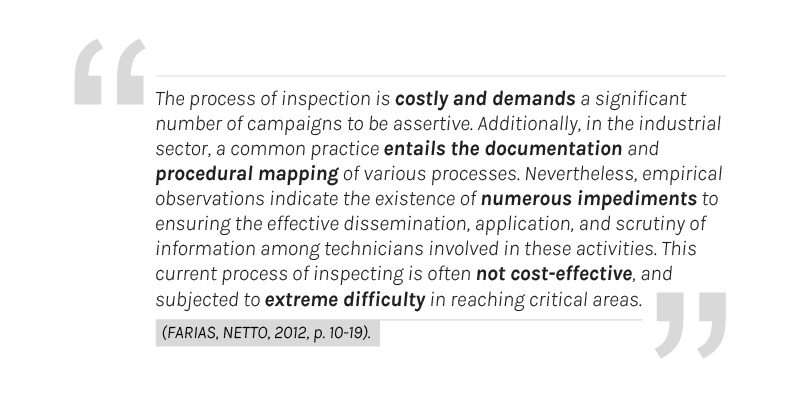
Addressing corrosion encompasses allocating dozens of professionals to perform maintenance in an inherently hazardous environment. As a result, companies have to deal with limitations on the number of people allowed in the field, directly impacting the maintenance strategy and the capacity to solve occurrences rapidly. And, while corrosion progression doesn’t stop, asset activities must be paused to address degradation and anomalies.
Beyond that, corrosion inspections also involve relating data from each asset’s components. Each asset has its specific characteristics and safety standards, making data management from various sources a daunting task. According to Forbes, despite industries collecting vast amounts of data, 60% to 73% of this data has yet to be successfully used for any strategic purpose.
Likewise, non-optimized methods rely exclusively on a series of robust documents for each asset. These involve mapping minimal errors in enormous facilities, taking months to complete. In this sense, maintenance teams consume time relating tons of documents to comprehend the relation and scale of corrosion anomalies. Thus, usual approaches don’t allow a broad visualization of the operation’s improvement points.
For this reason, corrosion inspections face improvement opportunities, and AI fits perfectly to execute this task.
The role of AI in corrosion detection
AI acts as a catalyst in the corrosion detection process. To do so, it uses a series of tools such as algorithm combination, reality capture, and 3D models, delivering a much more accurate and reliable result than manual report inspections. Considering this, AI-driven corrosion detection is not replacing human workers, but freeing them to execute more creative and well-informed tasks while avoiding safety risks.
To address corrosion in an optimized way, Vidya developed AI Computer Vision. This technology integrates reality capture with Computer Vision and deep neural networks, being able to autonomously identify visual anomalies in images, such as corrosion, pitting, and potential discontinuities. The output is to have all the critical anomalies mapped and classified, with components, areas, locations, and prioritization.
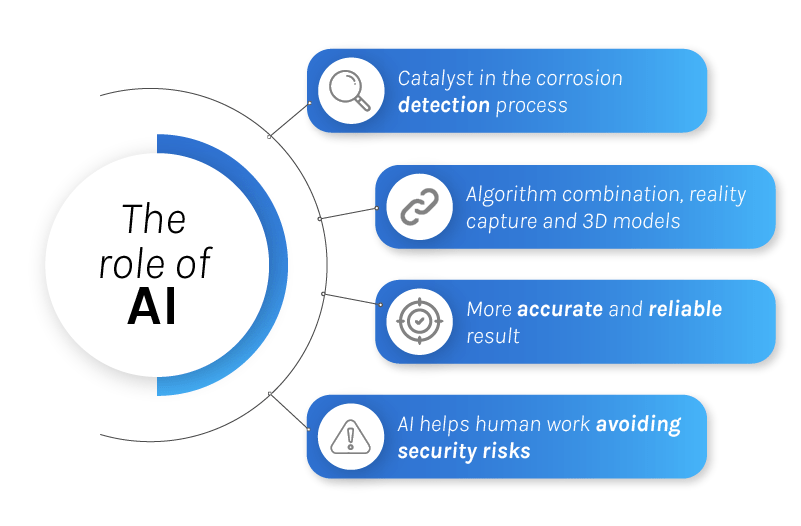
AI-driven corrosion treatment: Computer Vision
AI Computer Vision was built to detect anomalies optimally, offering enhanced accuracy to extract valuable data and make decisions based on that information. This algorithm developed by Vidya was incorporated into innovative maintenance applications, such as the DFM (Digital Fabric Maintenance) for Oil and Gas, and the DSI (Digital Structural Integrity) for Mining industries. In this regard, Vidya’s solutions were relied on by multiple major energy industries, such as MODEC, Vale, and Equinor. The milestones achieved by the collaborations can be synthesized in:
MODEC
To ensure the continuous and secure extraction of oil and gas amidst the relentless challenges posed by offshore environments MODEC partnered up with Vidya. Applying the DFM solution to MODEC’s entire Brazillian FPSO Fleet aimed to address the expensive, time-consuming, and risky activities associated with corrosion inspections. In this context, significant outcomes have been achieved since the deployment:
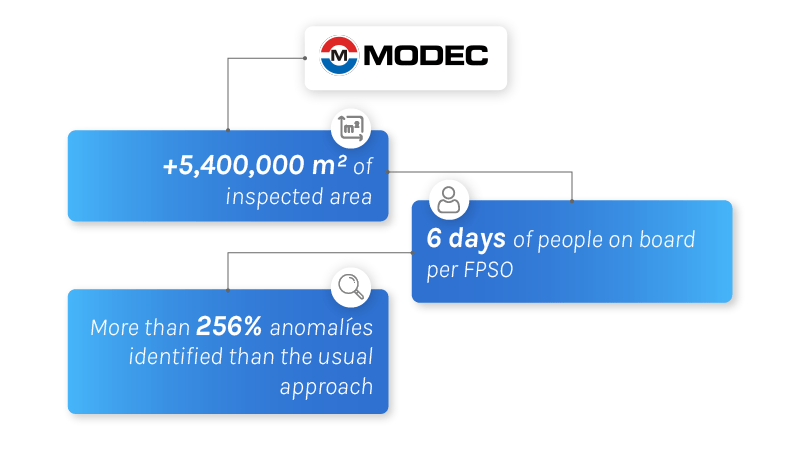
Vale
Vidya first joined forces with Vale, an international company committed to sustainable mining, in 2020. The project aimed to extend asset lifespan and reinforce sustainable and responsible mining practices. Considering this, Vale faced challenges in effectively managing diffuse integrity data and difficulty in finding data on anomalies, largely attributed to the extensive scale of its assets. To overcome that, Vidya deployed the Digital Structural Integrity application, which generated valuable results for the operation, such as:
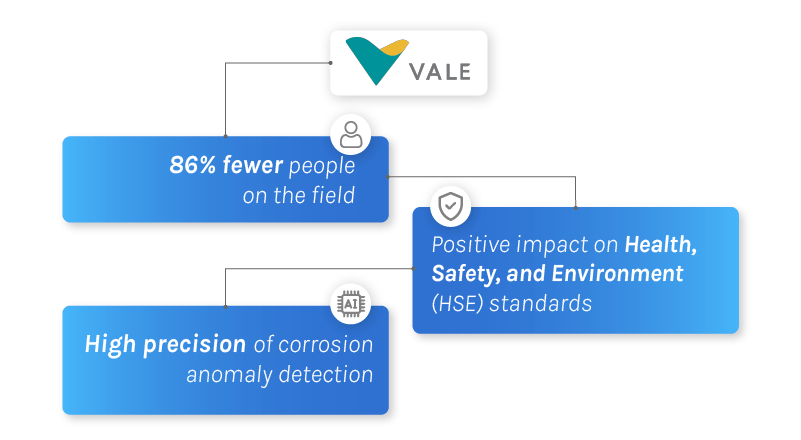
Conclusion
AI applied to corrosion inspection is no longer a speculative scenario, it’s a reality that’s been saving millions of dollars with a self-improvement tool. Furthermore, AI-driven corrosion detection is increasingly important in optimizing asset integrity and performance. Moreover, AI anomaly detection ensures a data-driven approach, leveraging extensive structured and unstructured data to make more informed decisions.
